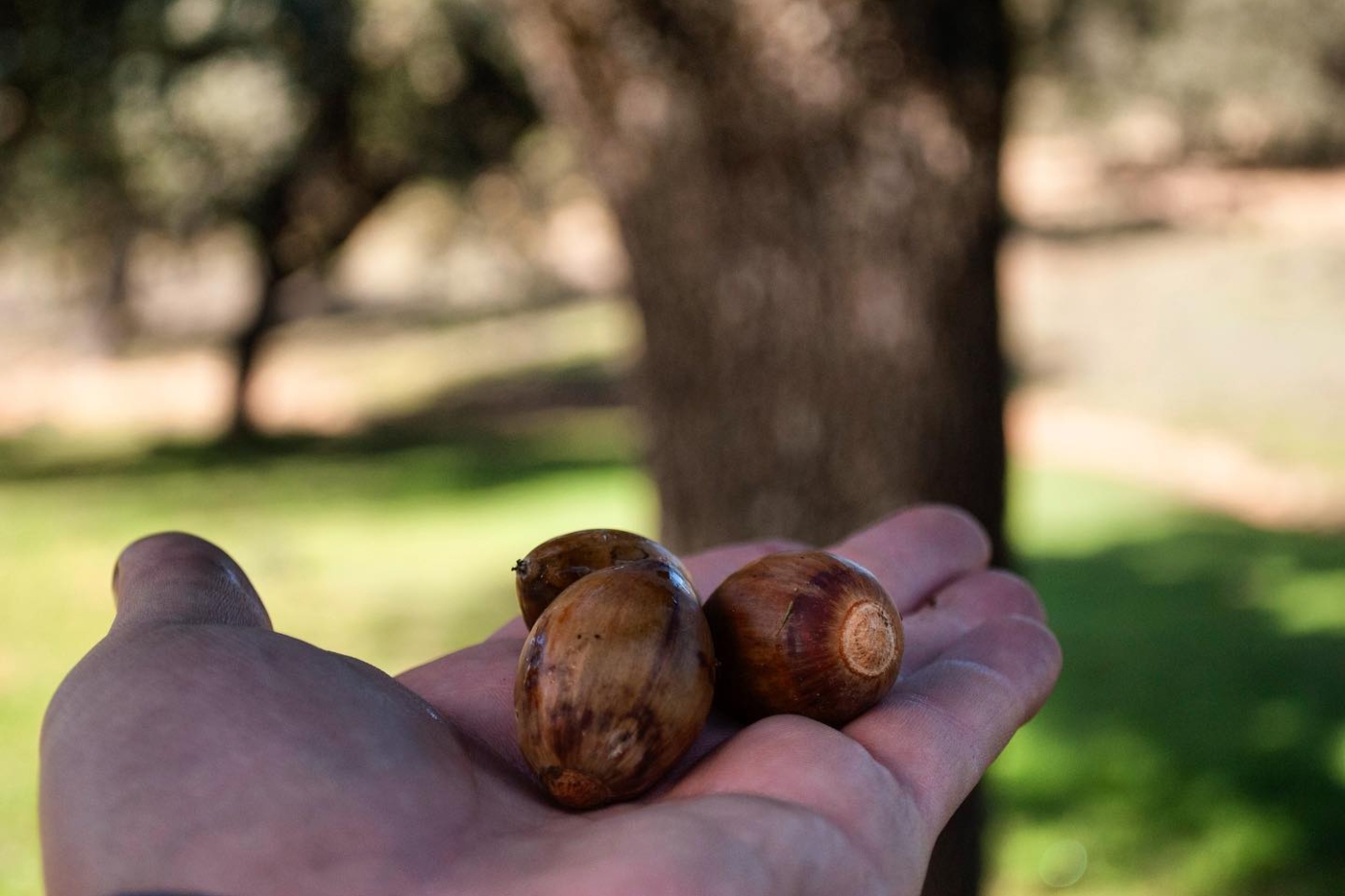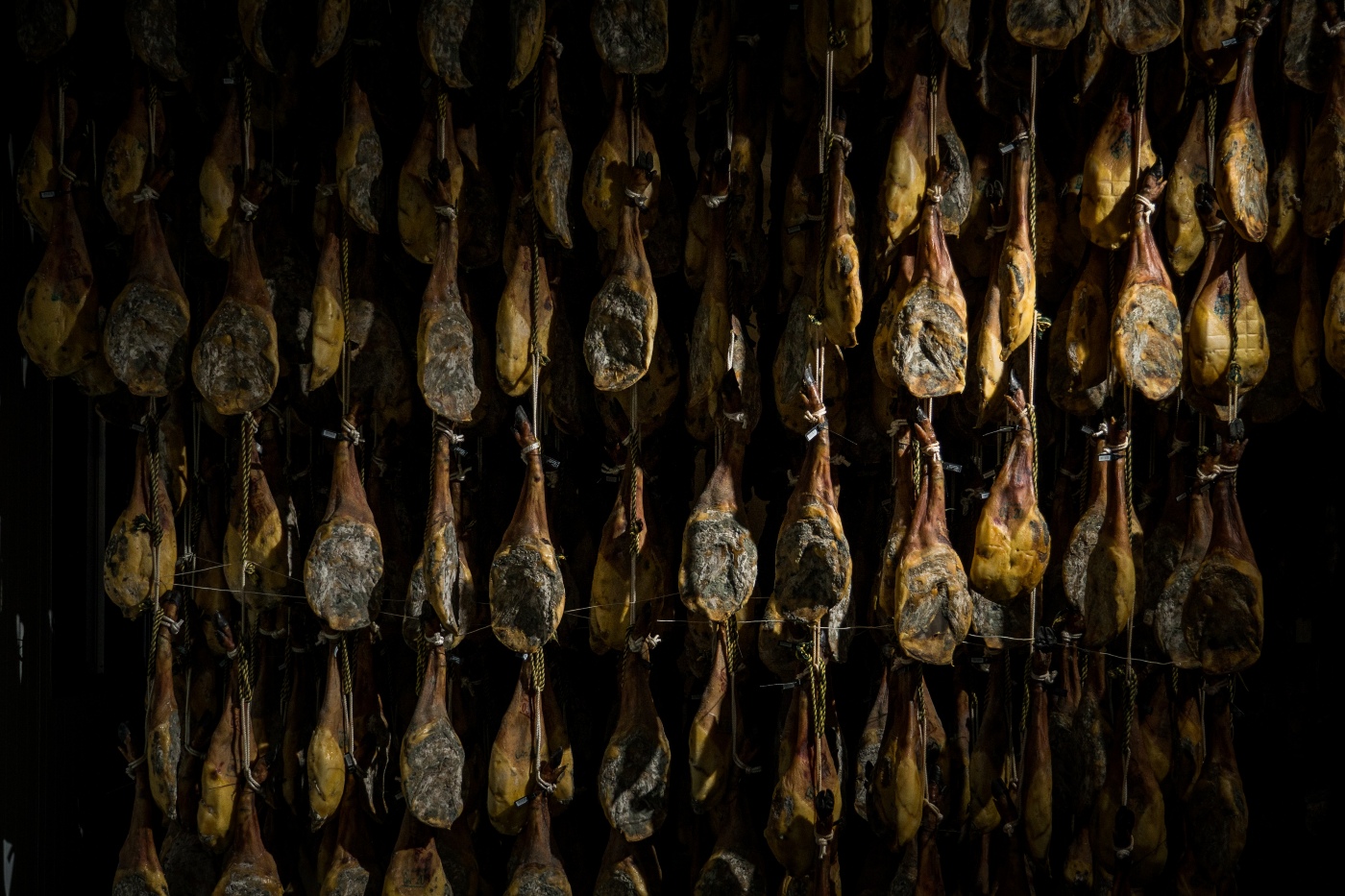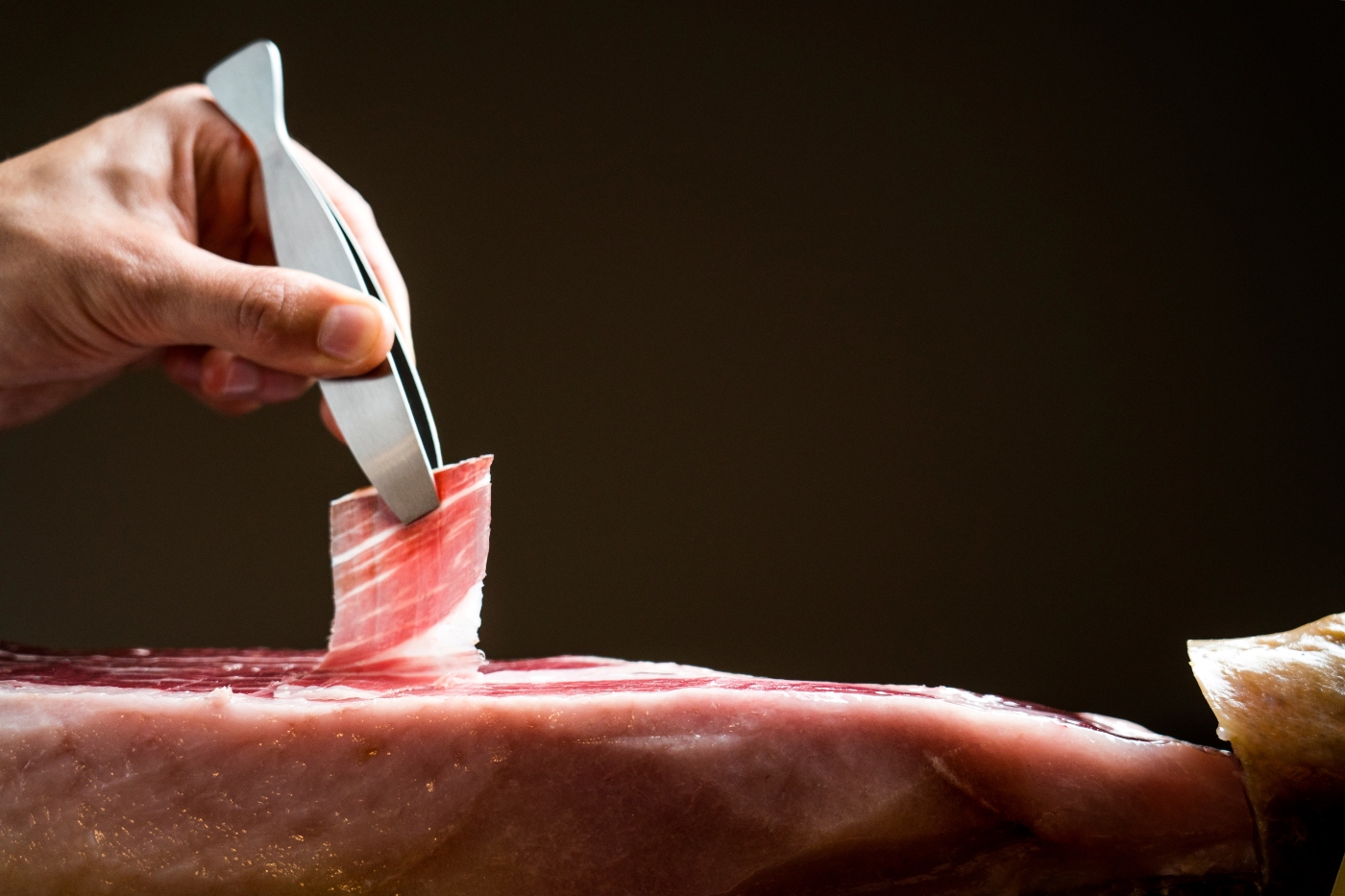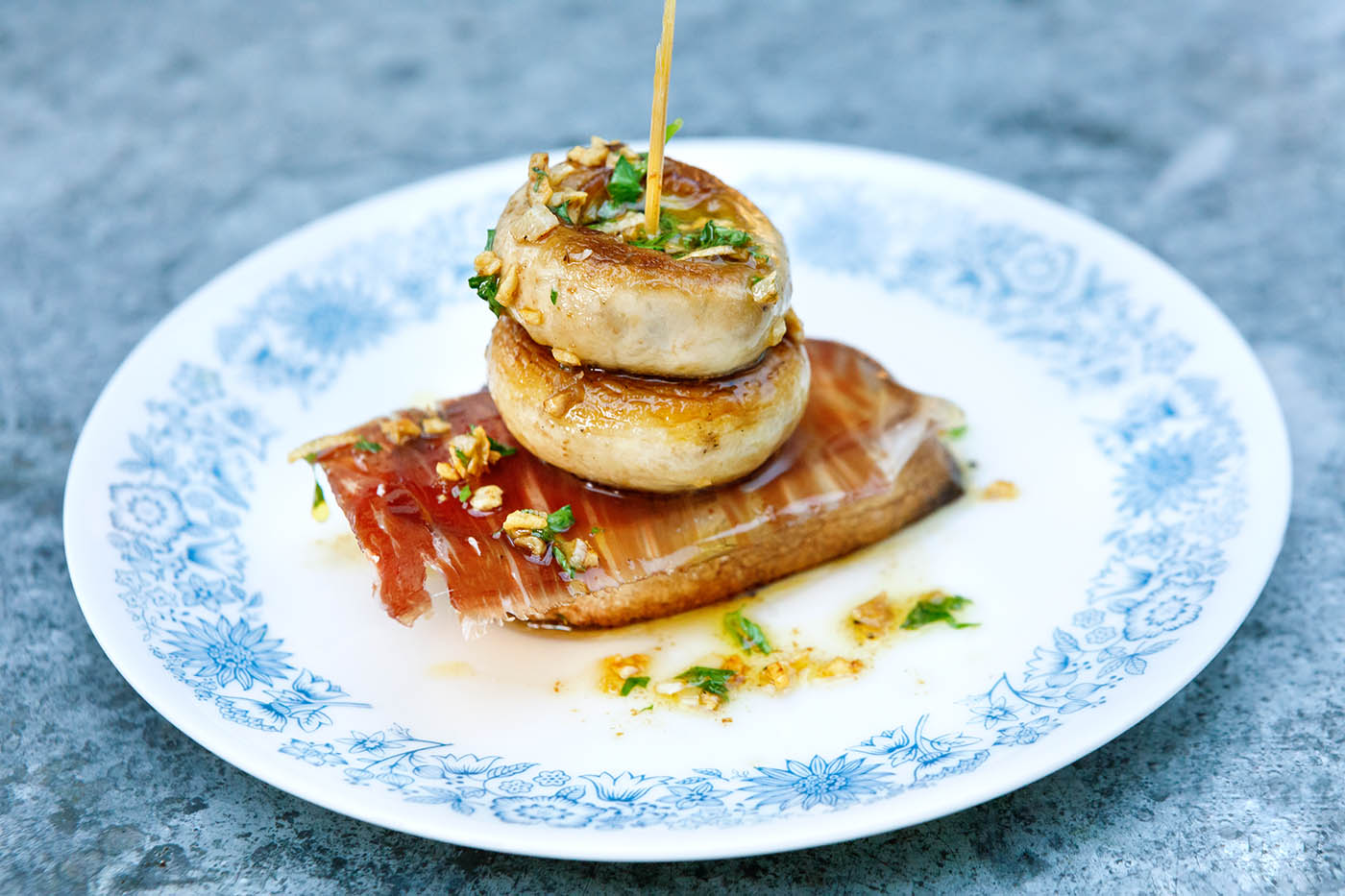JANUARY SALE! GET 20% OFF ALL STORE
1 Choose your service
2 Choose your date
✕
The Spanish love their meat and are incredibly proud of how they produce it and relish how it tastes. Genuine Spanish Jamón is amongst some of the best ham products on the planet and the two main types are Jamón Serrano and Jamón ibérico. How do you choose between them? What are the key differences? What type of pigs do they come from? How are they reared? Are they cured differently? How do you slice it? How is it eaten? How do they taste? This “Jamón Serrano vs Jamón Ibérico” guide has all the answers and more.
It is thought that the decedents of the Spanish pigs used to make Jamón Serrano and Jamón Ibérico landined in the Iberian Peninsula during the times of the Phoenicians around 1100 BC. The birthplace of Spanish ham was Gádir, currently the city of Cádiz, but during the Roman Empire times, ham was much more prevalent.
At first glance Spanish Jamón Serrano and Jamón Ibérico may look quite similar, but the differences, some subtle, have an impact on the taste. Jamón is cured Spanish ham from particular pigs. Serrano and Ibérico are two distinctly different types, so let’s explore how they differ, starting with the pigs.
Jamón Serrano and Jamón Ibérico are made from two very different breeds of pigs and this is one of the reasons they taste and are priced differently from each other.
Jamón Serrano is from white pigs, such as Duroc, Landrace, Pietrain or Large White. Conversely, Jamón Ibérico is from very rare 100% pure-bred Iberian breed pigs which are crossed mainly with Duroc and are a minimum of 50% Iberian. Black pigs have a much greater capacity for fat to infiltrate the muscle and it’s this that gives Jamón Ibérico its unique flavour and texture.
Interestingly, the way you can differentiate whole legs of Jamón Serrano and Jamón Ibérico is by the colour of the pigs’ trotters. The white pigs have white trotters and the Iberico pigs have black trotters.
The diet of a pig and its upbringing make a huge difference to the texture and taste of the Jamón it produces. So, which breeds of pigs produce Jamón Serrano and Jamón Ibérico?
White pigs used to create Jamón Serrano are usually reared on farms and fed cereals. Their diets and water consumption are very carefully monitored and they are allowed to move
Black pigs that yield Jamón Ibérico, like the award-winning ham produced by Arturo Sánchez, are fed and reared quite differently. First, we need to understand what “Montanera” is. Montanera is a special period that runs from autumn until March. During that time, black pigs are raised with complete freedom. They are allowed to graze meadows and pastures feeding on a diet of only natural unprocessed ingredients – exclusively holm oak and cork oak acorns, grasses and herbs. What also makes Arturo Sánchez Jamón Ibérico so special is the black pigs are raised for a “double” Montanera over two years. In that time, they gain 75–90 kg in weight and a unique characteristic pure and balanced flavor. Their natural diet, not only intensifies the flavour and enriches texture of the ham, it ensures greater fat infiltration in the meat.


Depending on the producer, the ham of white and black pigs used to produce Jamón Serrano and Jamón Ibérico is cured in specific conditions and for certain lengths of time. Both these factors have a profound effect on each type of ham. Both types of ham use a similar curing process, but in general, Jamón Serrano has a shorter curing time.
For example, the Jamón Serrano sourced and stocked by Basco is produced by Martinez Somalo – a family company from La Rioja that was founded in 1900. All their Serrano ham is salted and then cured. The salting process involves burying the hams in salt containers where they remain at a temperature of approximately zero degrees Celsius for as many days as the ham weighs, minus one.
Once salted, the Serrano hams are undergoes a cold-drying process. The hams remain curing for approximately 6 months, starting with a low temperature and high humidity, then gradually increasing the temperature and decreasing the level of humidity. After the first 6 months, the ham loses the most of its weight. Then the heat-ageing stage then begins and can last anything from 6 to 18 months, depending on the type of ham Martinez Somalo wants to produce.
Their Gran Reserva Serrano ham is made from 100% Spanish white pigs, carefully selected for their quality, and cured for a minimum of 10 months and up to 14 months under the watchful eye of Martinez Somalo ham master. This curing process creates a high-quality balanced Serrano ham with excellent marbling. Interestingly, Serrano comes from the word “Sierra’ meaning mountains. It is referred to as mountain ham as it is cured in the cool mountain air.
Jamón Ibérico produced by Arturo Sánchez is cured for a minimum of 48 months. This takes place in natural curing cellars in Guijuelo where the cold, dry winds from the Béjar and Gredos mountain ranges.
Let’s get technical for a moment. The acorn diet of the pigs and the unique way in which Arturo Sánchez Jamón Ibérico is mountain-cured combine to create the perfect conditions to trigger a natural chemical process that promote the presence of tyrosine. Tyrosine is an amino acid that crystalllises during the ham curing process when the amount of salt used is reduced and the temperature is slowly increased. Proteins break down and create little white chalky dots in the meat which are the signs of an artisanal, well-cured ham.


Both Jamón Serrano and Jamón Ibérico are delicious, natural healthy and nutritious meats. They do differ in taste though, mainly due to the breed of pigs, their upbringing and the curing process. It has a slightly woody, softer, less intense taste than Jamón Ibérico mainly due to a comparatively shorter curing process and the white pigs’ cereal diet.
The wild acorn, grasses and herb diet of black pigs that are used to create Jamón Ibérico play a big part in the taste of the ham. They give it an unmistakable aromatic, earthy, floral and nutty flavour. This flavour is intensified by the much longer curing process which results in a deep, sweet, salty and complex taste. Fat in the meat is also so wonderfully soft, it melts in your mouth. Plus, the presence of tyrosine gives it a unique umami fifth taste dimension.
Whilst the taste of Jamón Serrano and Jamón Ibérico differ greatly, the cuts do not. Both are usually available either as whole legs of ham or pre-sliced for convenience. Basco stocks whole legs and the following sliced varieties; sliced Jamón Serrano and Jamón Ibérico Bellota and Cebo.
There is a real art to slicing a whole Jamón Serrano and Jamón Ibérico leg. Most come with the bone in however we also stock a Jamón Serrano boneless ham which is much easier to slice.
If you go for a traditional whole leg of Jamón Serrano or Jamón Ibérico, you will first need to mount it on a special ham stand then clean and shape the ham with a boning knife calla a ‘puntilla’. Also, place a damp cloth under the legs to keep it steady. You will need three types of sharpened knives; a cook’s knife for making the deep cut around the ham shank, a boning knife for peeling off the hard ham skin, and a long flexible ham slicing knife to shave thin slices of Jamón.
Start by cutting off the skin with a boning knife, then move on to peeling the ham by removing the hard skin that wraps the ham fat developed during drying and curing. Only peel the skin off from an area that you are going to eat at the time.
Next, remove the layer of fatty meat immediately under the skin of your Jamón Serrano or Jamón Ibérico leg using your long flexible knife. Start nearest the shank and slice down. Remember to set aside some layers of fat to cover the exposed meat on the leg when finished.
Your Jamón Serrano or Jamón Ibérico ham is now prepared for slicing. Take your ham slicing knife and slice it in thin, almost transparent slices. Use tongs or your hand to lift the slices as you cut. Present your Jamón Serrano or Jamón Ibérico ham slices on a plate in single layers that overlap slightly.
Finally, open a bottle of Rioja, let it breathe whilst your Jamón Serrano or Jamón Ibérico ham slices warm to room temperature of approximately 20°C. This enables natural oleic acids in the meat to soften and helps intensify the flavours. Don’t forget to place layers of fat over the meat and wrap it in a muslin cloth to ensure none of the meat is exposed to the air.
Basco stocks several types of whole hams including legs of Jamón Serrano, Jamón Ibérico de Bellota, de Cebo and also Jamón Ibérico Paleta de Bellota which is a smaller cured front shoulder ham.
You can read a dedicated and highly detailed “How to Carve Jamón Ibérico Leg” Guide here.


Complete carving sets for both types of Spanish hams are available which contain everything you need to successfully carve like a professional. For lovers of Serrano, we offer a Jamón Serrano Ham Carving Set containing a full ham leg cured for up to 12 months, a ham stand, knife and carving instructions all in a presentation box. A Mini Serrano Ham Carving Set with a 1 kg boneless ham, wooden board and carving knife in a beautiful presentation box makes the perfect gift.
If Jamón Ibérico ham is your preference, you have a choice of two full leg and one shoulder carving sets, all compete a premium ham stand, knife and full instructions. The Jamón Ibérico de Bellota Gran Reserva Carving Set comprises of an acorn-fed 100% iberico certified ham leg weighing 7.4 kg that’s aged a minimum of 48 months. The Jamón Ibérico de Cebo Carving Set contains a free range 50% iberico certified ham cured naturally for a minimum of 30 months. For a smaller, less unwieldly option, our Paleta Ibérica De Bellota Carving Set contains a 4.3 kg acorn-fed 100% iberico certified whole shoulder ham cured for a minimum of 24 months.
Once carved, there are so many delicious authentic Spanish recipes that are brought to life with Jamón Serrano or Jamón Ibérico.
One of the simplest ways to enjoy Spanish ham is a Bocadillo de Jamón. The simplest and most popular bocadillo in Spain, these sourdough baguettes with slices of Jamón Ibérico de Bellota, sliced tomato, a tub of garlic and a drizzle of olive oil are perfect with a cold Spanish beer. You can find the recipe here.
Melon pairs beautifully with Jamón Ibérico. Melon con Jamón is a tasty Spanish tapas recipe that takes no time to prepare and is perfect for a lunch or starter for a barbecue. Another tapas favourite is one inspired by Spain’s oldest. Huevos Rotos con Jamón is a peasant dish featuring straw potatoes, fried eggs, slices of Jamón Ibérico. Serve with fresh crusty bread.
Fancy an Andalucian brunch or mid-week dish? Huevos a la Flamenca is a quick and tasty meal of baked eggs cooked in a tomato sauce made with onions, garlic, smoked paprika and roasted peppers, topped with crispy Jamón Serrano and spicy chorizo sausage. It’s brilliant with griddled bread.
Whether it’s Jamón Serrano or Jamón Ibérico, if it is sliced, to preserve its wonderful flavour and texture, it needs to be stored in a refrigerator at a temperature of between 2 to 8ºC.
Whole hams, if stored correctly do not need to be refrigerated and can last for one year unopened. Once you have started to cut it, keep it on its stand, cover it with some fat trimmings, wrap it in cling film and keep it in a dry place away from heat and eat as soon as possible. If stored like this, the opened area can be kept for up to a month. Make sure you open your ham in stages to prolong its life, unless you are using the whole ham in one go for a party or celebration.


Sign up to receive your discount code to use straight away today!
*This offer is only available to new customers who have not made a purchase from Basco before. The discount code can only be used once per customer. This offer is not available in conjunction with any other offer, promotion or discount. Please note that we cannot refund the 10% discount if you forget to use it on your first order, you can always use it on your second!

